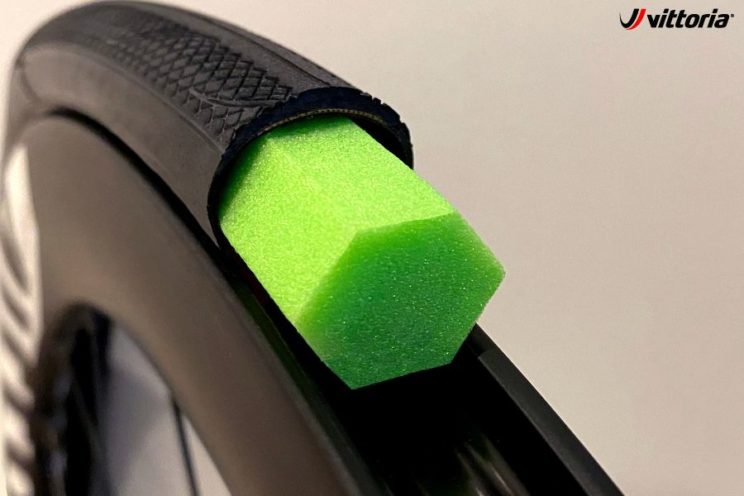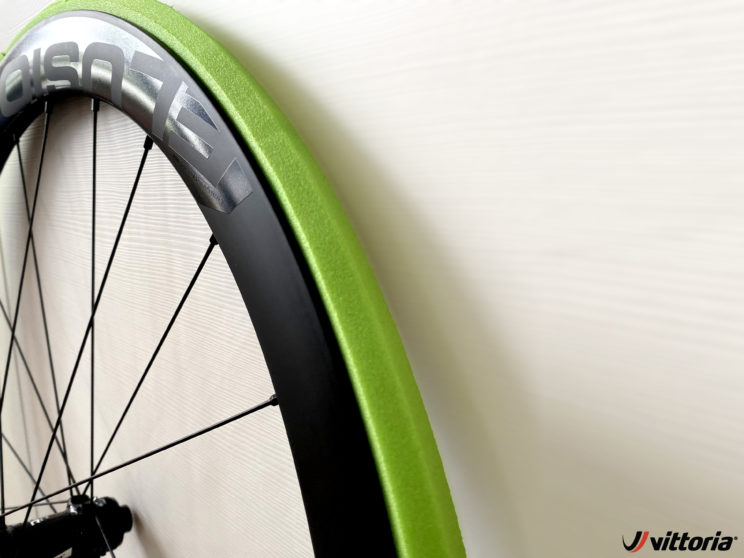The fear of every cyclist in the face of the possibility of punctures is going down in intensity. The reason, the introduction in the market of multiple anti -snack solutions. One of them is the mousse, increasingly popular for all types of bicycles. It is a foam ring that replaces an internal camera.
In its origins, the mousse was an element used by descent and enduro Riders to avoid sliding in the descents. These, in turn, inherited him from motorcycling, especially modalities such as motocross.
Today there are specialized cyclist brands (Vittoria,
Tannus, etc.) that even offer specific versions for MTB, cross country or road.
Why this popularization of the mousse? Is it really effective in preventing punctures? Is it easy to install? Let's answer these and other usual issues about this system.
MOUSSE ANTIPINCHAZOS: Characteristics and Types
The bicycle mousse has a hoop shape, just like a camera. Unlike this, its interior and exterior is the same body, made of flexible plastic material. It is installed easily between the tire and the tire, or between the tire and the camera. Its purpose is to plug the punctures or cuts of the roof.
[Captation Id = "Attachment_8342" Align = "Alignnone" Width = "744"]

Image: Mousse Vittoria Air-Liner (Vittoria).[/caption]
The mousse also gives volume to the wheel and reduces the risk of milding the tire. The shape of the mousse changes according to the type of wheel to which it is intended, adapting to the section or form that the roof has once mounted.
For example, a mousse for tubels does not have the same form of round section of a camera, but polygonal tips and shapes to facilitate its installation and accommodate the wheel movements.
You can distinguish two kinds of mousse according to the type of tire (conventional or tubeless) and several by modality (MTB, road, grave, etc.)
In this way, it differs between mousse for tubeless and chamber. The first, in union with the sealant fluid, is the most used and demanded, especially in MTB. The camera mousse is limited to specific uses in the modalities of descent or freeride, where weight gain is not so decisive.
There are types of mousse adapted to different cycling specialties. There are brands that offer specific road models, thinner and hexagonal section; There are also for Gravel, Cross-Country, Trail, Enduro, Descent and even for e-bikes.
Advantages of the mousse
The mousse antipinchazos has undoubted advantages. Next, some of them:
1. Very practical anti -infinance solution
The mousse plugs and protects the air leaks very effectively, both with a chamber cover and tubeless, thanks to the great opacity of its material. This is an added advantage, for example, in MTB races; Especially those of Cross-Country. Even having tubeless, punctures are inevitable. The mousse prevents the air from escaping and the biker can roll with relative comfort to boxes to replace the wheel.
2. Greater March Comfort
With the mousse the wheel wins in volume. This entails greater grip and stability, especially in descents (although it is also useful in technical increases). Similarly, it increases the tire absorption power in the face of ground impacts and reduces its rebound effect.
3. Reduces the risk of disalsering
In stronger supports or impacts, the mousse prevents the tire housing from deforming too much, considerably reducing the possibilities of disalsering. At the same time, an extra benefit is achieved: it protects the damage tire, especially if it is carbon. In fact, Mousse is also known as tire protector.
[Captation Id = "Attachment_8344" Align = "Alignnone" Width = "744"]

Image: Mousse Vittoria Air-Liner (Vittoria).[/caption]
Disadvantages of the Mousse
The use of the mousse also involves some inconveniences.
1. Increase in weight
A mousse (from MTB) adds, on average, a considerable extra 150 g per wheel. If your goal is to obtain maximum lightness and go to the tubeless, add a mousse to your bike will be counterproductive. On the other hand, it slightly increases the friction of the rolling band with the ground due to the larger ballast.
2. They are expensive
The cost of a mousse is similar to that of a tire, between 30 and 50 euros per unit. In fact, it is one of the most expensive anti -infincial solutions. And its durability is limited.
3. Forces to readjust the suspensions
Adding mousse to your covers will modify factors such as the volume or dynamic of the wheel. This issue will also affect the suspension, in case of mounting it on your bike. Adding the absorption power of the roof with that of the suspension, you will have a bicycle with excess compression. A change that can slow down reactions and contaminate the pedal. Hence, it is necessary to readjust the rebound, compression and pressure, both of the fork and the shock absorber.
Other considerations about the mousse
In addition to the above, if you finally decide on the Mousse you should not forget some issues. Here we share some.
In tubess covers, more liquid will have to be added
Some Mousse models have some porosity in the foam, which ends up absorbing the tubeless liquid as if it were a sponge. This can reduce protection capacity. The latest models or the highest quality are more waterproof so that it is not necessary to spend so much liquid.
Bicycle behavior changes slightly
With the mousse, the wheel shows some more poise and heavier in rhythm changes or strong accelerations. They are not substantial differences with respect to a conventional or pneumatic tubess. But you must adapt your driving and usual management a bit to the effects of the mousse.
Resistant and flexible, but with limited duration
A mousse does not last forever. The estimated useful life, with frequent and intense use, is less than one year. In this case, its use can be extended for two or three tubess maintenance cycles (from 6 to 9 months). We recommend taking advantage of the time to change the liquid to review your status. If its use hurries a lot, they can leave and chop, sticking to the walls of the tire, becoming unusable.
 Image: Mousse Vittoria Air-Liner (Vittoria).[/caption]
The mousse also gives volume to the wheel and reduces the risk of milding the tire. The shape of the mousse changes according to the type of wheel to which it is intended, adapting to the section or form that the roof has once mounted.
For example, a mousse for tubels does not have the same form of round section of a camera, but polygonal tips and shapes to facilitate its installation and accommodate the wheel movements.
Image: Mousse Vittoria Air-Liner (Vittoria).[/caption]
The mousse also gives volume to the wheel and reduces the risk of milding the tire. The shape of the mousse changes according to the type of wheel to which it is intended, adapting to the section or form that the roof has once mounted.
For example, a mousse for tubels does not have the same form of round section of a camera, but polygonal tips and shapes to facilitate its installation and accommodate the wheel movements.
 Image: Mousse Vittoria Air-Liner (Vittoria).[/caption]
Image: Mousse Vittoria Air-Liner (Vittoria).[/caption]












